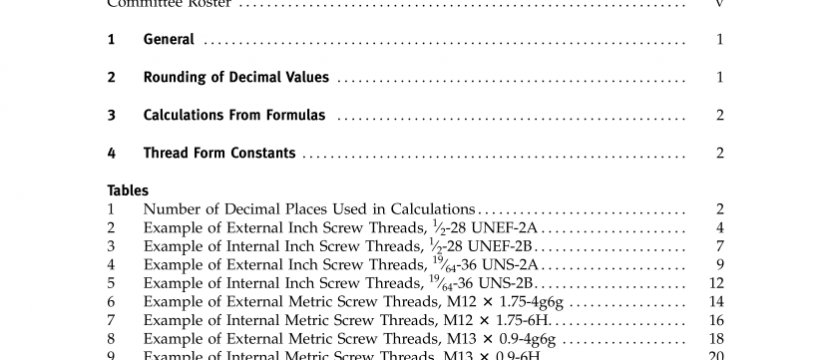ASME B1-30:2002 pdf free download
ASME B1-30:2002 pdf free download.SCREW THREADS: STANDARD PRACTICE FOR CALCULATING AND ROUNDING DIMENSIONS
3.2 Examples
The formulas in the examples for inch screw threads in Tables 2, 3, 4 and 5 are based on those listed in ASME B1.1, Unified Inch Screw Threads. Tables 2 and 3 are based on a size that when converted from a fraction to a decimal will result in a number that has only four decimal places. Tables 4 and 5 are based on a size that when converted will result in a number with infinite numbers of digits after the decimal point.
The formulas in the examples for metric screw threads in Tables 6, 7, 8 and 9 are based on those listed in ASME B1.13M, Metric Screw Threads. Tables 6 and 7 show the use ofthe tabulated values for allowances and tolerances (in accordance with ISO 965-1) for the calculation of size limits for standard diameter/pitch combinations listed in both ISO 261 and ASME B1.13M. The constant values differ from those used for inch screw threads, in accor- dance with the policy of rounding of this Standard, because metric limits of size are expressed to only three decimal places rather than four.
4 THREAD FORM CONSTANTS
For thread form data tables, see Table 10. The number of decimal places and the manner in which they are listed should be consistent. Thread form constants printed inolder thread standards are based ona function of thread height (H) or pitch (P). The equivalent of the corresponding function is also listed. There are some constants that would require these values to 8 or 7 deci- mal places before they would round to equivalent val- ues. For standardization the tabulated listing of thread values based on a function of pitch has been established, with thread height used as a reference only. All thread calculations are to be performed using a function of pitch (P), rounded to 8 decimal places for inch series and as designated for metric series, not a function of thread height (H). Thread height is to be used for refer- ence only.
ASME B1-30:2002 pdf free download
